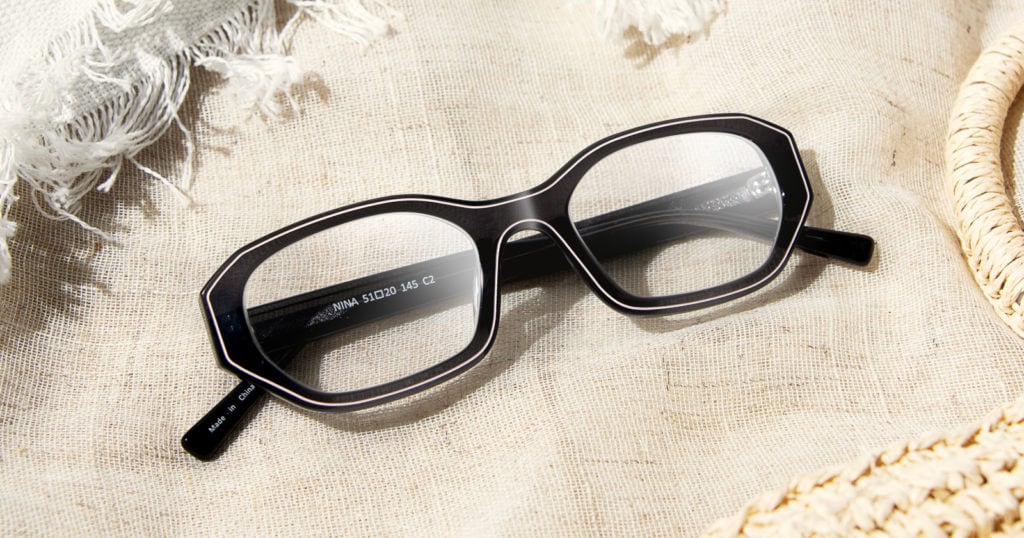Reviewed by: Dr. Matthew Miller, OD on June 24th, 2022
Picking out a pair of sunglasses isn’t what it used to be. It’s no longer a matter of choosing your favorite eyewear out of the handful of options available. Now, in addition to the vast number of frame colors, sizes, and styles to go through, there are many lens options to consider too.
If you’re like many people, the biggest decision about your sunwear is whether you want traditional shades or transition lenses. While they each have their perks and drawbacks, comparing the two is essential when deciding how you want to protect your eyes from the sun.
Below, we weigh the pros and cons of transitional lenses vs sunglasses. Let’s get to it.

Transition Lenses vs. Sunglasses
Whether transition lenses or sunglasses are the better option depends on what you’re looking for from your eyewear.
If you usually wear prescription glasses, photochromic sunglasses (also called Transitions lenses) are a no-fuss solution. If you don’t need vision correction, or you’re a tried and true contact lens wearer, non-prescription sunglasses are a great option.
What Are Transition Lenses and How Do They Work?
Transitions® Light Intelligent Lenses™ and other types of photochromic lenses are specially designed to darken when exposed to ultraviolet light. The lens material is implanted with trillions of chloride and silver halide molecules.
Sunlight exposure activates the molecules and causes them to change form. This collective reaction darkens the lenses, resulting in a new, darker lens tint like what you would see in sun shades.
When you go back indoors, the molecules begin to settle, and they gradually return to a clear lens. It takes approximately 30 seconds for the lenses to darken, and a few minutes for them to return to normal.
Science for the photochromic lens was developed by PPG and Essilor in 1990 and marketed under the Transitions® brand. Since then, many manufacturers have developed non-branded versions of the product. However, “transition lenses” is still the most common term used.
Pros and Cons of Transition Lenses
Their cutting-edge technology makes Transitions® a convenient option for many, but they aren’t for everyone. Here are the pros and cons to consider when shopping for light-sensing specs:
Pros
- You get two pairs in one – Transitions® act as clear prescription glasses indoors and tinted sunglasses outdoors to protect from harmful UV rays.
- They’re cost-effective – Because you get both lens tint options in a single frame, Transitions® may be more budget-friendly than purchasing separate pairs of prescription glasses and sunglasses.
- They’re convenient – Rather than switching between eyeglasses and prescription sunnies, Transitions® offer everything in one frame for added convenience.
- There are many style options – Transitions® come in many styles, colors, and designs that allow you to show off your personal flair. They also have more traditional options that offer a more professional appearance.
- They provide inclusive vision correction – Transitions® lens technology can be applied to single-vision, bifocal, and progressive prescriptions.
Cons
- Cold weather affects reaction time – Molecules in the transition lenses are triggered by UV light and temperature. This causes a slower transition in warmer environments when you need quicker darkening time. It also means quicker changes in colder environments when you may not want completely dark lenses.
- There’s a prolonged clear-up time – It can take anywhere from 2-10 minutes for lenses to clear up after being exposed to UV rays outdoors. This leaves them in a hazy in-between phase, which may bother some people.
- You may only get partial darkening in the car – Because windshields are tinted to block UV rays, standard photochromic lenses don’t always darken completely while driving. However, Transitions® XRTActive® lenses are designed to darken in bright light and UV light, including when you’re behind the wheel.
- There are limited polarized options – Polarized options are currently limited to Transitions® XTRActive® lenses and they only come in shades of gray.
Pros and Cons of Sunglasses
Sunglasses are the original eyewear for sun protection and style when outdoors. Whether a pair of shades is better for you than photochromic glasses can be determined by weighing their pros and cons:
Pros
- You control the lens tint – With transition lenses, you can’t control how dark they get in any given environment, especially in your car. But you can pop on a pair of shades when the sun is out and have your desired darkness instantly.
- You don’t have any clear-up delays – When you’re no longer in bright sunlight, you can simply take your sunglasses off — no need to wait several minutes for the lenses to clear up.
- You can get prescription and non-prescription styles – For those who need vision correction, many sunglasses can have your prescription added to the lenses so you can enjoy clear vision while outdoors.
- They’re less expensive than Transitions® – Prescription sunglasses are more expensive than non-prescription shades, but they’re still usually less expensive than photochromic glasses.
- They have many polarized options – Polarized sunglasses are widely available in prescription and non-prescription options. So, you can protect your eyes from glare with whatever lenses you want.
Cons
- They lack convenience – Having to stop and switch out of your regular glasses before you go outside can be annoying. Then removing your sunglasses to put them away when you’re indoors can be bothersome, especially if you go in and out frequently.
- You must store them when not in use – When you’re not using your sunglasses, it’s important to store them to avoid losing or damaging them. If you don’t have a convenient place to store their case, like in a handbag or backpack, you’re stuck carrying them around.
- Not all sunglasses are created equal – Cheap shades with poor UV protection can cause more damage to your eyes than wearing no sunglasses at all. When shopping for sunnies, look for “100% UV protection” or “UV 400” to ensure that you’re getting proper eye protection.

Transition Lenses vs. Sunglasses: What’s Better for You?
Before deciding what sun protection to get for your eyes, consider your day-to-day routine. You should want to wear them, so choose whichever type you think fits the most conveniently into your lifestyle.
Eyebuydirect has tons of frame options that can accommodate transition lenses, as well as prescription and non-prescription sunglass lenses. When you’re ready to start shopping around, check out some of our favorite retro styles.



